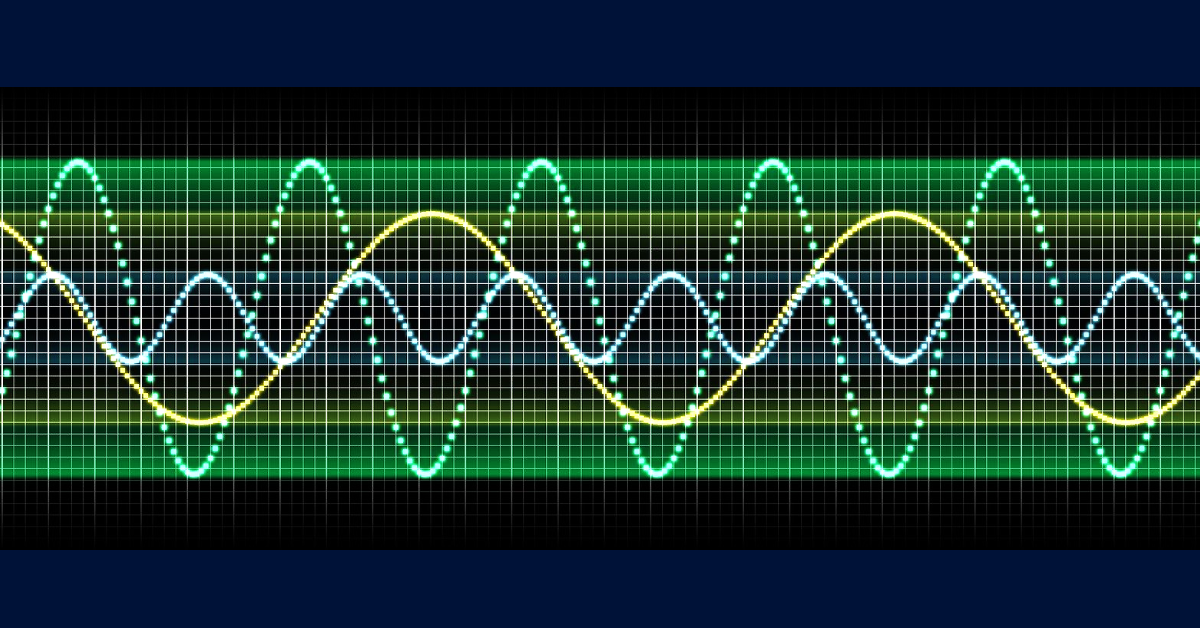
Modulation in Product Sounds
If your product has rotating shafts, gears, or some type of oscillatory input force, a noise and vibration engineer working on that product will most likely encounter modulation. Imbalance, non-ideal joints, gear meshing, or just the input to the rotating item all make modulation a real possibility.
What is modulation?
Products that have rotating equipment – wheels, motor shafts, turbine blades, or even product resonances that are affected by rotating equipment - are susceptible to modulation. Sounds with modulation have a perceived:
- change in volume, level, or amplitude (AM), or
- oscillating or varying frequency (FM)

Modulation can also be described by the rate of that change or oscillation:
Fluctuation is considered low-rate modulation – you can almost count it; perhaps a “waa-waa-waa-waa” sound
Roughness is higher-rate modulation - not really countable; a “grrrr” sound
There are plenty of words to describe a modulating sound – thrumming, humming, growling, warbling, just to name a few. You can point to sounds in media that are modulated:
A transporter, tricorder, or lightsaber in popular sci-fi series
A theremin musical instrument
Tremulant, vibrato, or tremolo in your favorite music
Why does it happen?
Often in mobility products, vibrations are generated from rotating a shaft, which is connected to a structure that has a resonance affected by the driving force. Pistons in an internal combustion engine or pump provide harmonic force inputs into all sorts of shafts, or even into acoustic air pulse around an engine or through the intake or exhaust.

PWM (pulse-width modulation) provides a type of oscillatory force input into some electric motors. These are connected to transmissions and drive- or propshafts in an electric vehicle. If any structure connected to the motor(s) or shafts has a resonance – felt or heard - that resonance could modulate with the input forces.

Imperfect tooth machining on a gear can cause a modulating sound, which can vary with shaft speed. A 36-tooth gear, with the last tooth being a little bigger than the others, will make most of its sound in 36th order (reference to the shaft speed), but the one bigger tooth will make order content in 35th and 37th order, and possibly others. These additional orders could cause modulation in a gear-related noise, depending on the gear speed. With enough amplitude in the additional orders, it could cause a rougher sound as opposed to pure tone.

Two rotating shafts with slightly offset rotation speeds can be a modulation concern. Some twin-engine aircraft have synchronizers that attempt to keep speeds between the two engines the same. Not having these, a “beating” sound can occur. This is fluctuation, or a modulation at a low rate - an oscillation you can count. If you have been on a twin-engine jet, you heard or felt that low frequency pulsing – imagine not having the synchronizers!

Maybe it is not heard in every condition. Motor speed run-ups may quickly run through a resonance before the modulation can be experienced. But, for any close to steady-state speeds, or slower or smaller changes in speed, this sound may become more apparent. Consider my vehicle’s heating and ventilation unit fan – the 1st speed on the blower has a tone (maybe blade passage?) that is modulated slightly. I don’t keep it in 1 very often, opting to go to a higher blower speed just to avoid it!

How to measure it, or counteract it
To find out if modulation is of concern, first - listen to it! It is not a problem noise until it is heard (and then addressed or a tolerance is put on a sound curve). You might not be able to SEE modulation in a standard FFT vs. time or RPM, no matter how good the resolution is. A part of your listening should involve interactive filtering – find the annoying, or modulating sound by filtering it out, or listening to that frequency area only. Another idea is to slow down the playback speed. Instead of listening to it at the nominal speed (1x), maybe try 0.3x – a rough sound may have more audible fluctuations when slowed down.
Understanding the fundamental sound and what might be driving it is the key to addressing the concern. Is it imbalance? Is there a mounting scenario that will be less conducive to transmitting vibrations? Can the modulation driving force be more chaotic or randomized? If it is a complex system, with more than one source, is there a better, or more precise, way to synchronize the rotation speed? If two motors operated on the same vehicle, is there an option to have different electric motor gearing?
Modulation – desirable or undesirable – is part of the sound character of many of the products we use today. Being familiar with the sound, and what causes it, helps to choose the right tool to investigate, mitigate, or even accentuate!
For questions about this article. Please contact sporter@headacoustics.com or info@headacoustics.com
NVH Motor Vehicle Engineering
1moLove the emphasis on listening and the use of a second method of slowing down besides the filtering. This helped me get convinced on a bearly hearable modulation last Friday.
Noise and Vibration engineer developing noise quieted LiDAR sensors
1moNice write up Steve!